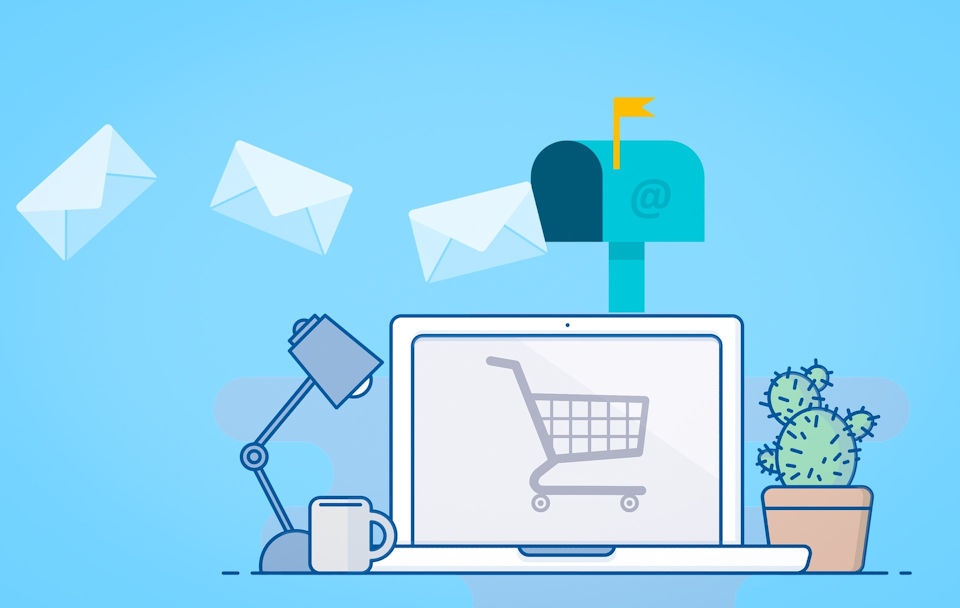Got Mail!
Create an e-mail campaign that converts to sales.

 Creating an e-mail campaign that converts starts long before messaging, layout and design. Much like with any marketing, there are key steps to crafting an e-mail that won’t get automatically deleted, or worse, cause someone to click the “unsubscribe” button.
Creating an e-mail campaign that converts starts long before messaging, layout and design. Much like with any marketing, there are key steps to crafting an e-mail that won’t get automatically deleted, or worse, cause someone to click the “unsubscribe” button.
These six steps can help you in creating an e-mail campaign that converts.
1. Segment Your Customer List
Creating separate customer lists can help you reach the right people with messaging that will resonate with them. From segmenting by demographics to taking into consideration their past purchases, creating an e-mail campaign that converts starts with knowing your audience and helps to inform your messaging.
It can even help save a customer. Creating lists based on cart abandonment or even of past customers who haven’t purchased in a while is a great way to reach them with a particular message to help draw them back. Segmentation also helps create a sense of personalization, which we will discuss a little further down in this article.
2. Define Your Goal
Once your e-mail lists are segmented, consider goals for each e-mail. What is it that you want to accomplish with your e-mail campaign? Are you trying to create product awareness? Drive traffic to your website? Gain leads or sales? Have the recipients download a white paper?
Just as with your e-mail list segmentation, defining your goals will help in crafting your overall messaging for the e-mail campaign.
3. Create An Eye-Stopping Headline
Once segmentation and goals are determined, the next step to creating an e-mail campaign that converts starts at the very beginning of the actual e-mail, the subject line.
The subject line can be a make-or-break decision on whether or not your recipient opens or deletes the e-mail. The subject line is your chance to convince the recipient that they need to read your e-mail and that it’s worth their time to open it. Keep it short, interesting, and when possible, personalize it. This leads us to the next step…
4. Personalize the E-mail
Adding the recipient’s name into the subject line is a great way to get their attention, but personalization goes deeper. This could mean using the e-mail segmentation to create a subject line that talks about that consumer’s action (or inaction) or maybe it’s pulling the products or services into the body of the e-mail that the customer viewed on your website but never purchased.
For example, if you have a segmented customer list for returning customers who added a new pair of yoga pants into their cart but then abandoned that cart, your e-mail subject line may read: “Emma, Still Interested in Those New Yoga Pants?” The body of the e-mail might showcase photos of the yoga pants with enticing copy and a clearly located button or link to the product page. You can even use Emma’s name again within the body copy of the e-mail.
This drilled-down personalization helps connect your brand directly to the consumer, instead of a generic e-mail that may or may not apply to your consumer base.
5. Utilize a Call to Action
Once the customer has opened the e-mail, it’s up to you to tell them what you want them to do next. Include a call to action that guides the consumer to take a next step. Maybe it’s simply directing the consumer to purchase those yoga pants. Or consider an incentive—for example, “Buy Now and Receive 15% Off.”
Ask your reader to do something more than just read the e-mail by creating a call to action that offers them the chance to click through to a landing page, website or product page where their interaction with your brand will continue.
6. Keep the E-mail Branded
Consider the tone, voice and style used to represent your brand throughout all mediums. From your website to social media, that brand voice should be consistent, and this includes your e-mail marketing as well. The e-mail should sound natural and not forced. Whether your brand voice leans toward edgy and laid back or reserved and conservative, keep that tone throughout your e-mail campaign. This helps maintain consistency throughout the customer journey when the consumer moves from the e-mail to your website to look at products or decides to follow your business on social media platforms.
It’s been said that it takes an average of eight touchpoints before making a sale. Utilizing e-mails as part of your overall marketing efforts is one of the more effective touch points as it offers your brand the chance to personalize a message to the customer that you often cannot do in other channels. After implementing these six steps, track analytics such as open rates, click-through rates and conversions to determine your e-mail campaign success rates. And, as with any campaign, adjust where needed.
As originally published on Forbes.com. Clearbridge Branding Agency is a digital marketing agency located in Glassboro. Visit ClearBridgeMedia.com.








